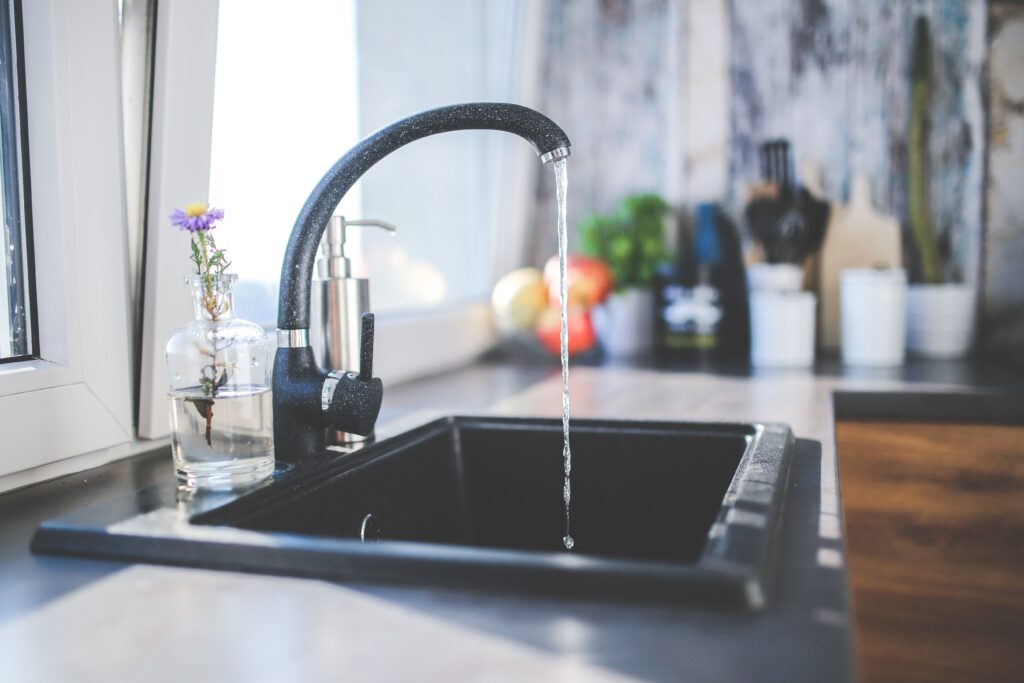 Home owners use a considerable amount of water throughout the day from hand washing to yard maintenance. According to the Environmental Protection Agency (EPA), the average American family uses more than 300 gallons of water per day at home. Reducing water consumption is top of mind for many home buyers. According to a recent survey from the National Association of Home Builders, water-conserving fixtures — such as high-efficiency toilets, faucets and shower heads — were rated as essential or desirable home features by more than half of the respondents. The following are a few water-saving ideas for your home inside and out.
Home owners use a considerable amount of water throughout the day from hand washing to yard maintenance. According to the Environmental Protection Agency (EPA), the average American family uses more than 300 gallons of water per day at home. Reducing water consumption is top of mind for many home buyers. According to a recent survey from the National Association of Home Builders, water-conserving fixtures — such as high-efficiency toilets, faucets and shower heads — were rated as essential or desirable home features by more than half of the respondents. The following are a few water-saving ideas for your home inside and out.
Eliminate Leaks. An easy way to save water is to make sure you have no identifiable water leaks. Ten percent of homes have leaks that waste 90 gallons or more per day. Common leaks inside your home are found in toilets or faucets. Irrigation systems or garden hoses can be sources of leaks outside your home. Most leaks are relatively simple to repair and require few tools or hardware.
Tankless Water Heaters. These units are designed to save energy by heating water only when needed. They are similar in cost to traditional gas water heaters but are 30% more efficient, according to the U.S. Department of Energy.
High-efficiency Toilets. Older, inefficient toilets use as much as 6 gallons per flush (gpf) and are considered a major source of wasted water in many homes. All new toilets since 1992 must be 1.6 gpf or lower. High-efficiency toilets are 1.28 gpf or lower and those with the EPA’s WaterSense label have also been performance-tested and are worth considering if you replace your toilet. More information about the EPA’s WaterSense program is available online epa.gov/watersense.
Faucets. The latest water faucet technologies for your kitchen or bathroom are designed to shut off the water automatically immediately after use. Turning off the tap while brushing your teeth can save as much as 3,000 gallons of water per year. If replacing your fixture isn’t an option, consider installing an aerator to reduce water use. An aerator is an inexpensive faucet accessory that can be easily retrofitted to a conventional faucet.
Shower Heads. Showering accounts for nearly 17 percent of residential indoor water use. A common misconception about low-flow shower heads is that the water will come out as a steady trickle. In fact, modern low-flow shower heads deliver consistent water pressure allowing a person to wash and rinse without any issues while also conserving water. WaterSense certified shower heads have been tested to demonstrate they perform as well or better than conventional shower heads.
Washing Machines. If you are in the market for a new washing machine, a full-sized ENERGY STAR-certified clothes washer uses 14 gallons of water per load, compared to the 20 gallons used by a standard machine. There are other ways to save water while doing laundry such as washing a full load each cycle.
Landscape Design. You can design your yard for water-efficiency by incorporating plants that are defined as low water use or drought tolerant. Similarly, native plants can survive the local climate with minimal watering. How you water your yard can also save water; smart irrigation, sensors and even what time of day (avoid midday) makes a difference.
To learn more about ways to save water or improve your home’s overall efficiency, visit nahb.org/sustainability or contact you local association here.

